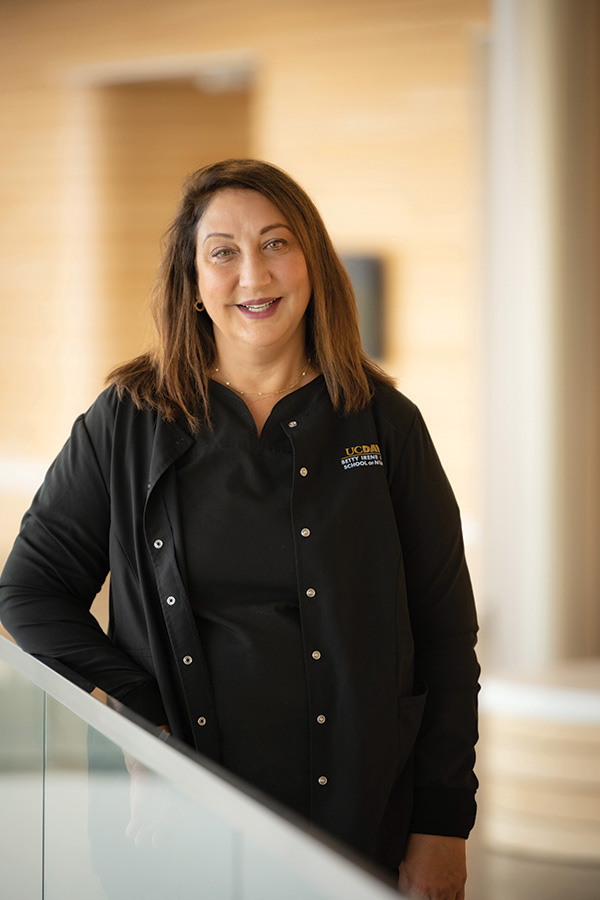
Simulating a continuum of care
Q & A with Amy Nichols, Director for Clinical Simulation and Clinical Professor
What is the role of simulation in educating health professions students?
Simulation is a learning pedagogy that goes far beyond the technology that drives it. Guided simulation experiences immerse students — individually or in groups — in authentic, safe environments where mistakes don’t risk harm to real patients. Students learn to work in interdisciplinary teams to solve real-life encounters. Simulation also ensures that students experience situations they may not encounter during clinical rotations, such as end of life or a decompensating intensive-care patient of a postpartum hemorrhage.
Whether encounters are with highly sophisticated high-fidelity manne-quins or trained actors playing the part of a patient, fidelity is key. Clinical simulations can bridge the gap between classroom knowledge and patient interactions.
Is there evidence to support the use of simulation to supplement and replace direct patient care experiences for nursing students?
Yes, we have strong evidence that simulation has been proven to be an effective method of supplementing nursing course content. Yet, there are still those who want us to justify the use. I would like to leverage more than 20 years of evidence to focus on understanding how simulation is linked to student learning and how this learning transfers to better patient care and outcomes.
The coronavirus pandemic really highlighted the question: Can simulation be substituted for direct clinical experiences? A National Council of State Boards of Nursing study demonstrated that simulation can effectively be substituted for traditional clinical experiences in prelicensure nursing education. The study included 10 schools using 10%, 25% and 50% simulation compared to schools using no simulation. NCLEX scores were essentially the same for those schools using 50% simulation and those schools using no simulation. The challenge is moving regulatory boards to adopt new percentages.
What is special about the Betty Irene Moore School of Nursing simulation spaces?
Our spaces within Betty Irene Moore Hall provide students three types of experiences. A one-bedroom apartment mimics an actual home. Students learn how to provide care in a space where the power differential lies with the patient. They also experience mobility and space challenges. Our ambulatory care suite resembles a real, outpatient clinic complete with a reception desk, waiting room and 15 exam rooms. Finally, our 8-bed inpatient unit provides hospital ward and intensive care unit environments. All suites have closed-circuit videos to capture student encounters, as well as debrief rooms where students can view the video and discuss actions taken during the exercise. Complementing all of these suites is a task-training lab, where students get hands-on practice with skills such as IV starts, splinting, suturing and wound care.
How are these spaces used in an innovative way to support student learning?
We create innovative simulations that present as a continuum of care, which students do not get to experience firsthand in clinical rotations. For example, a prelicensure nursing student visits a client in their home. If the student determines that the client needs to visit their primary care provider, they relocate to the clinic space where the nurse practitioner and physician assistant students examine the client. If inpatient treatment is recommended, they admit the patient to the hospital ward space where our goal is to develop experiences where interprofessional team works together.
What do you think the future of simulation holds for education health professionals?
Simulation-based learning is no longer a novelty, but a necessary part in educating health professionals. With the trend of seeing clients where they live, the use of telehealth becomes a necessary part of curriculum for care providers. This really came to light during the pandemic where video visits increased exponentially. As available clinical sites shrink, whether it’s COVID-19 or the next pandemic, simulation ensures we can provide students with the experiences they need to become compassionate, competent and knowledgeable care providers.

